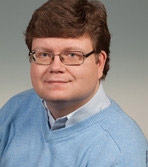
Holger Kluck
Post doc
Rare Event Searches
CRESST, DANAE, NU-CLEUS
Contact
Email: Holger.Kluck(at)oeaw.ac.at
Telephone: +43 1 51581 - 2847
Location: HEPHY
Room: 220
Research interests
My research interest is particle astrophysics, especially the search for dark matter: it provides a fascinating connection between observations of the largest structures in the universe with the physics of elementary particles. Astronomical observations of dark matter are also one of the strongest indications of a new physics beyond the standard model of particle physics.
Since the days of my doctoral studies, I have contributed to the direct search for dark matter: in the beginning as part of the EDELWEISS experiment, now as a member of the CRESST and the DANAE project. As a founding member of NUCLEUS, an additional research interest is developing the coherent elastic neutrino nucleus scattering (CEvNS) into a tool for precision measurements of the Standard Model and for searching for New Physics.
Common to all of these experiments is the fact that the signal rate is very low. Therefore, a precise knowledge of the background contribution is crucial. The background sources cover a wide range of individual processes and energy scales, e.g. neutron production by cosmic muons at TeVs, but also eV energy depositions by Auger electrons caused by intrinsic contaminations of the detector with products of the U/Th decay chains. Whereas DANAE is using Si as target material, CRESST and NUCLEUS are able to use a wide range of target materials, most commonly CaWO4 and Al2O3 which are read out at the O(10eV) energy scale.
For CRESST, DANAE, and NUCLEUS I study the contribution of each process via Monte Carlo simulations based on the software framework Geant4. In the past, I lead the working groups of CRESST and NUCLEUS on background simulations. Currently, I am focusing my work on the ELOISE project: as its PI, I am aiming to provide a reliable simulation of electromagnetic processes in CaWO4 and Al2O3 at sub-keV energies. A crucial contribution to CRESST and NUCLEUS.
Outreach activities
On the Vienna „Dark Matter Day“ (31 Oct. 2017) I presented galactic rotation curves as one hint to dark matter.
In the exposition „Spurensuche - Die Bausteine des Universums“ I participate as one of the guides, explaining the exhibits during the opening ceremony (11 Sept. 2014).
Further Information
A full list of my publication can be find via ORCID or on my INSPIRE profile.